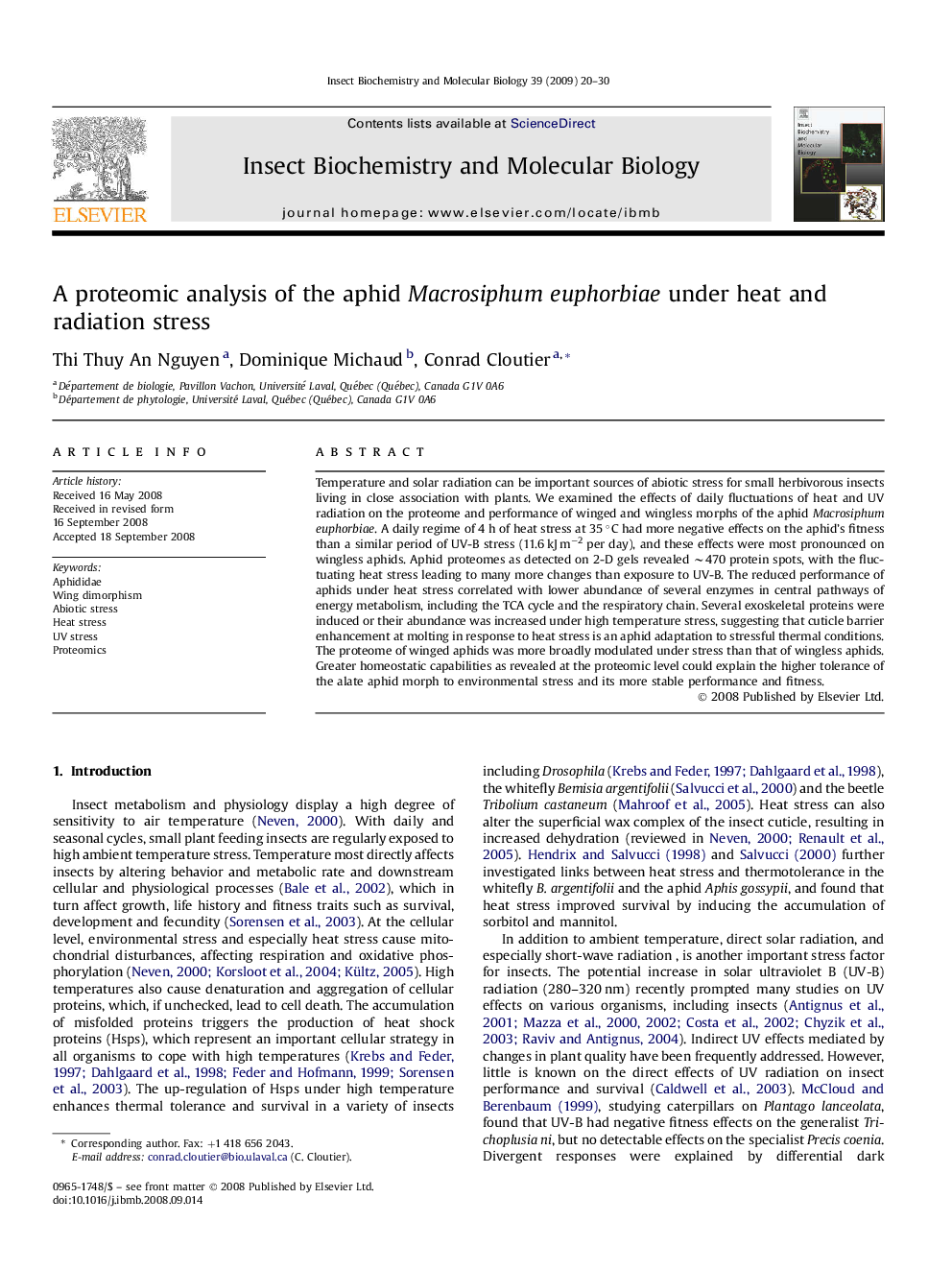| Article ID | Journal | Published Year | Pages | File Type |
|---|---|---|---|---|
| 1982662 | Insect Biochemistry and Molecular Biology | 2009 | 11 Pages |
Temperature and solar radiation can be important sources of abiotic stress for small herbivorous insects living in close association with plants. We examined the effects of daily fluctuations of heat and UV radiation on the proteome and performance of winged and wingless morphs of the aphid Macrosiphum euphorbiae. A daily regime of 4 h of heat stress at 35 °C had more negative effects on the aphid's fitness than a similar period of UV-B stress (11.6 kJ m−2 per day), and these effects were most pronounced on wingless aphids. Aphid proteomes as detected on 2-D gels revealed ∼470 protein spots, with the fluctuating heat stress leading to many more changes than exposure to UV-B. The reduced performance of aphids under heat stress correlated with lower abundance of several enzymes in central pathways of energy metabolism, including the TCA cycle and the respiratory chain. Several exoskeletal proteins were induced or their abundance was increased under high temperature stress, suggesting that cuticle barrier enhancement at molting in response to heat stress is an aphid adaptation to stressful thermal conditions. The proteome of winged aphids was more broadly modulated under stress than that of wingless aphids. Greater homeostatic capabilities as revealed at the proteomic level could explain the higher tolerance of the alate aphid morph to environmental stress and its more stable performance and fitness.
